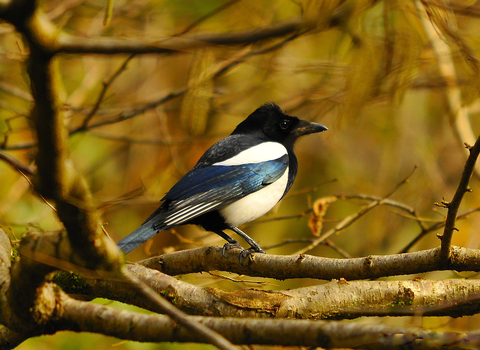
©Steve Waterhouse
Magpie
"One for sorrow, two for joy…" is a popular rhyme associated with the magpie - a bird of much myth and legend. An unmistakeable member of the crow family, it can be seen almost anywhere.
Scientific name
Pica picaWhen to see
January to DecemberTop facts
Category
Stats
Length: 44-48cmWingspan: 56cm
Weight: 200-240g
Average lifespan: 5 years
Common. Classified in the UK as Green under the Birds of Conservation Concern 5: the Red List for Birds (2021). Protected in the UK under the Wildlife and Countryside Act, 1981.
Habitats
About
The magpie is one of our most familiar birds and the source of much myth and legend: 'one for sorrow, two for a joy...' is a rhyme that many children learn. Magpies are, in fact, small crows, and are omnivorous, feeding on carrion, invertebrates, and chicks and eggs. They are sociable birds and are often seen 'chattering' noisily in small groups across many habitats, from gardens to parks, and heaths to hedges. During spring, the males help the females to build nests by bringing materials which they then arrange. They are famous for collecting all kinds of objects, particularly anything shiny, to decorate the nest.What to look for
The magpie is an unmistakeable long-tailed bird. It is mainly black, with a white belly and white patches on the shoulders and wings.Where to find
Widespread, but absent from the north of Scotland.Did you know?
Folklore surrounds the magpie: from providing good luck when greeted, to being in league with the Devil, its ubiquitous presence has provided plenty of opportunities for stories. Many surround religion, including the belief that it didn't mourn with all the other birds at Christ's crucifixion, and that it refused to enter Noah's Ark, preferring to stay on the roof and 'swear' for the whole journey.Watch
Magpie (https://vimeo.com/646936563)
Tom Hibbert
